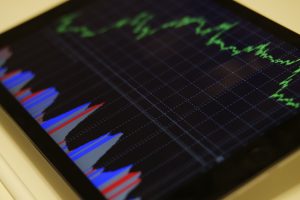Forex, also known as foreign exchange, is the largest financial market in the world. Forex trading typically involves buying or selling one currency in exchange for another, with the goal of making a profit from the fluctuations in the exchange rate between them.
High-Frequency Trading (HFX) or Algorithmic trading involves the use of computer algorithms for to execute trades at high speeds and frequencies. HFX is a subset of Forex trading, but it differs in the way that it is executed. HFX traders aim to capitalize on small price discrepancies, often profiting from tiny price movements. This form of trading is prevalent in various financial markets, including stocks, futures, and cryptocurrencies.
The major difference between Forex and HFX is the method of executing trades. Forex trading is typically done manually, either through a broker or a trading platform. Traders analyze market trends and make decisions based on their own analysis and intuition. HFX on the other hand is automated, with computer algorithms executing trades based on pre-programmed rules and parameters.
We will be judging the differences between Forex and HFX considering market focus, trading strategies, risk profile, and technology requirements.
1. Market Focus
- Forex trading focuses solely on trading currency pairs, reflecting the strength of one currency against another.
- High-Frequency Trading (HFX) on the other hand, can be applied to various financial instruments, such as stocks, commodities, and cryptocurrencies, but it mostly emphasizes highly liquid assets.
2. Trading Strategies
- Forex trading involves varioustrading strategies, including scalping, day trading, swing trading, and position trading. Traders may hold positions from minutes to several months, depending on their strategies and the market conditions.
- HFX strategies revolve around ultra-fast trades with extremely short holding periods, seeking to capitalize on tiny price fluctuations within a small time.
3. Risk Profile
- Forex trading carries its own set of risks, including currency volatility, geopolitical events, and economic indicators. While leverage can amplify gains, it also magnifies losses, making risk management critical.
- HFX is naturally high-risk due to its fast-paced nature. Leverage in HFX may increase the percentage of possible losses, and dependence on complex algorithms could put traders at risk of unexpected technical issues. For example, in 2010, an HFX algorithm caused the “flash crash” on the US stock market, wiping out billions of dollars in a matter of minutes.
4. Technology Requirements
- Forex trading can be conducted with standard trading platforms, and traders can use a variety of tools for analysis. While technology is important, it is not as extremely vital as in HFX.
- HFX depends mainly on cutting-edge infrastructure and technology to conduct trades in milliseconds. HFX firms that are profitable spend a lot of money on innovative technology.
Conclusion
Forex and HFX are both forms of trading that involve buying and selling currencies. However, Forex trading centers on currency exchange and requires a thorough understanding of global economic factors, whereas HFX is an algorithmic, technology-driven strategy designed to capitalize on short-term price discrepancies. HFX is riskier than Forex trading, but it can also be more profitable for those who have the knowledge and resources to execute it successfully.






